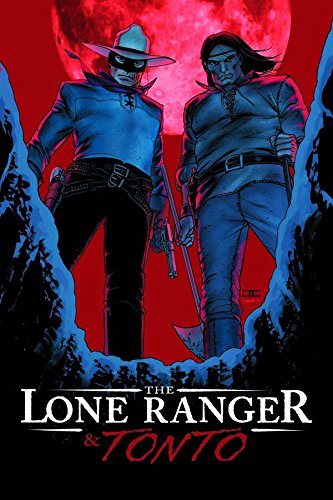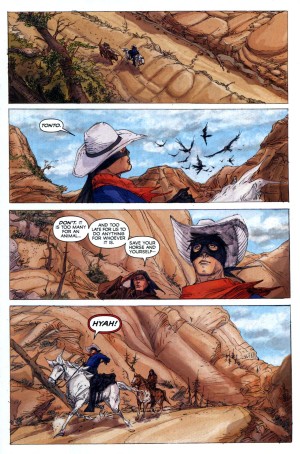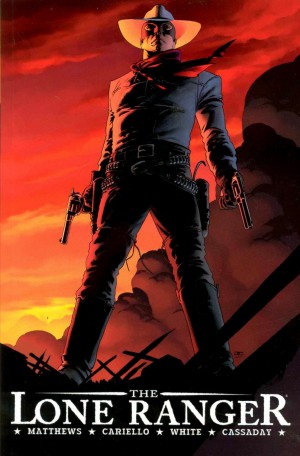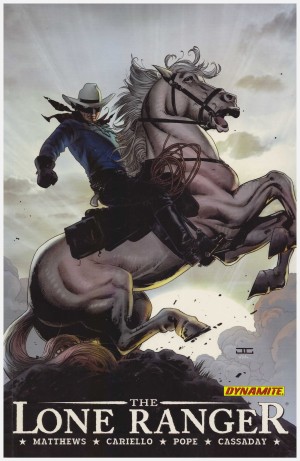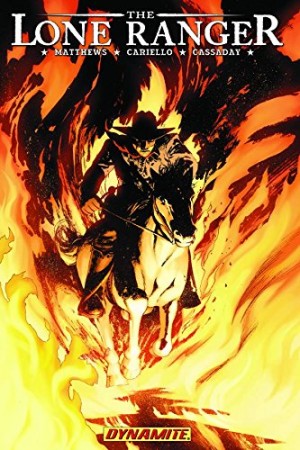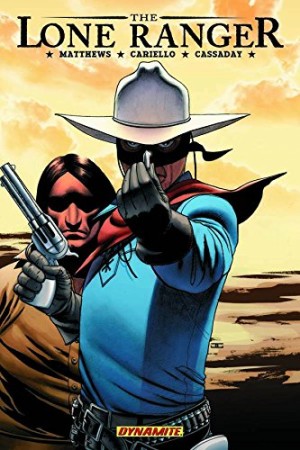Review by Ian Keogh
Those sad at the departure of Brett Matthews from the scripting of the Lone Ranger after four very good volumes should be mollified by this collection of four stories.
Tonto here receives equal cover billing as befits his relationship with the Lone Ranger as equal partner in preference to faithful companion. His participation in the stories is also broadened from his somewhat grumpy presence in the parent series, as this is later in the Lone Ranger’s career. In this material he has a familiarity.
Jonathan M. Abrams and Neil Turitz each collaborate with Matthews on two stories, but you’d not know it without the credits as the material bears his hallmark of an interesting ethical quandary at its heart. We have a killer who doesn’t match the usual profile, the high cost of mining, a flyer promoting death as entertainment, and the responsibility of the press to distil the truth. There’s toying throughout with the depiction of the Lone Ranger as a paragon of virtue, but never in a disrespectful fashion. When advised in the opening chapter not to investigate a flock of circling vultures as it’s too late, he refuses to concede that possibility, and that’s the essence of the beacon of heroism he is.
It’s only in the final chapter that we have some art from Matthews’ regular Lone Ranger collaborator Sergio Cariello, and it’s very welcome. He supplies the inserts in a tale otherwise drawn by Esteve Polls. Vatche Mavlian illustrates two tales, and he’s a frustrating artist. Some pages are beautifully drawn in an attractive thin line recalling turn of the 20th century illustrators, yet there’s also some very loose layouts compulsively over-rendered coupled with confusing storytelling. Mario Guevara’s work on the opening chapter (used as sample illustration) is less wispy and more satisfying if occasionally lapsing into static poses.
The inconsistent art and lack of a bigger picture make this book slightly less compelling than the main Lone Ranger series, but it’s engaging and satisfying.
